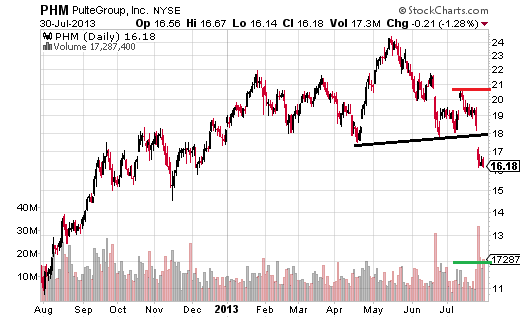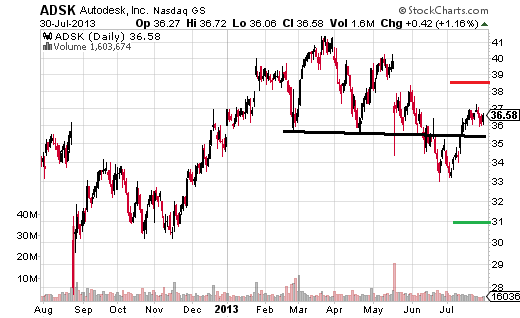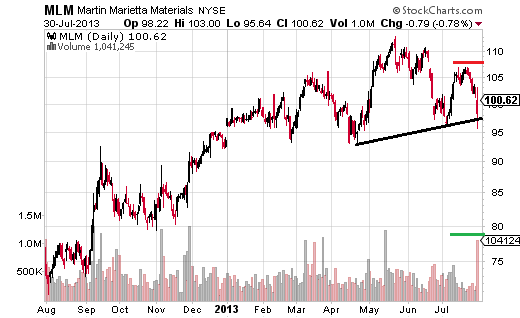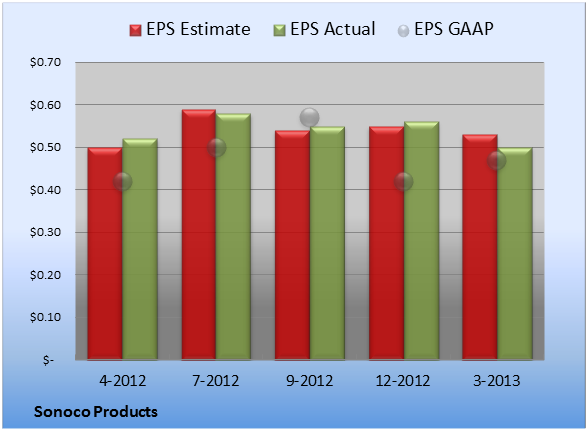DELAFIELD, Wis. (Stockpickr) -- Professional traders running mutual funds and hedge funds don't just look at a stock's price moves; they also track big changes in volume activity. Often when above-average volume moves into an equity, it precedes a large spike in volatility.
>>5 Stocks Poised for Breakouts
Major moves in volume can signal unusual activity, such as insider buying or selling -- or buying or selling by "superinvestors."
Unusual volume can also be a major signal that hedge funds and momentum traders are piling into a stock ahead of a catalyst. These types of traders like to get in well before a large spike, so it's always a smart move to monitor unusual volume. That said, remember to combine trend and price action with unusual volume. Put them all together to help you decipher the next big trend for any stock.
>>5 Rocket Stocks to Buy in December
With that in mind, let's take a look at several stocks rising on unusual volume today.
Huron Consulting Group
Huron Consulting Group (HURN) is a provider of operational and financial consulting services. This stock closed up 2.5% at $60.96 in Monday's trading session.
Monday's Volume: 344,000
Three-Month Average Volume: 120,486
Volume % Change: 148%
From a technical perspective, HURN spiked higher here and tagged a new 52-week high at $61.08 with above-average volume. This stock entered new 52-week high territory after it took out some near-term overhead resistance at $61.01. Market players should now look for a continuation move higher in the short-term if HURN can manage to clear Monday's high of $61.08 with strong volume.
Traders should now look for long-biased trades in HURN as long as it's trending above Monday's low of $59.30 or above more near-term support at $58 and then once it sustains a move or close above its new 52-week high at $61.08 with volume that hits near or above 120,486 shares. If we get that move soon, then HURN will set up to enter new 52-week-high territory, which is bullish technical price action. Some possible upside targets off that move are $65 to $68.
TheEnsign Group
TheEnsign Group (ENSG) offers skilled nursing and rehabilitative care services. This stock closed up 2% at $47.76 in Monday's trading session.
Monday's Volume: 141,000
Three-Month Average Volume: 65,086
Volume % Change: 93%
From a technical perspective, ENSG jumped higher here and broke out above some near-term overhead resistance at $45.35 with above-average volume. This move also pushed shares of ENSG into new 52-week-high territory, since the stock closed above $45.35. Market players should now look for a continuation move higher in the short-term if ENSG manages to take out Monday's intraday high of $46.32 with high volume.
Traders should now look for long-biased trades in ENSG as long as it's trending above some near-term support levels at $45 or at $43, and then once it sustains a move or close above its new 52-week high at $46.32 with volume that's near or above 65,086 shares. If we get that move soon, then ENSG will set up to enter new 52-week-high territory, which is bullish technical price action. Some possible upside targets off that move are $50 to $55.
SM Energy
SM Energy (SM) is an independent energy company engaged in the acquisition, exploration, development and production of oil, gas and NGLs in onshore North America. This stock closed up 1.1% at $89.12 in Monday's trading session.
Monday's Volume: 1.30 million
Three-Month Average Volume: 878,928
Volume % Change: 85%
From a technical perspective, SM spiked modestly higher here right above its 50-day moving average of $84.98 with above-average volume. This stock has been trending sideways and consolidating for the last month, with shares moving between $83.52 on the downside and $93.70 on the upside. Shares of SM are now starting to push within range of triggering a big breakout trade above the upper-end of its recent range. That trade will hit if SM manages to take out Monday's high of $89.63, and then once it clears more resistance at $92.57 to its 52-week high at $93.70 with high volume.
Traders should now look for long-biased trades in SM as long as it's trending above its 50-day at $84.98 and then once it sustains a move or close above those breakout levels with volume that's near or above 878,928 shares. If that breakout hits soon, then SM will set up to enter new 52-week-high territory, which is bullish technical price action. Some possible upside targets off that breakout are $100 to $105.
CVR Energy
CVR Energy (CVI) is engaged in petroleum refining and nitrogen fertilizer manufacturing industries through its holdings. This stock closed up 1.3% at $40.03 in Monday's trading session.
Monday's Volume: 1.11 million
Three-Month Average Volume: 553,164
Volume % Change: 125%
From a technical perspective, CVI trended modestly higher here with above-average volume. This move briefly pushed shares of CVI into breakout territory, since the stock flirted with some near-term overhead resistance at $41.19. Shares of CVI closed off its intraday high of $41.29 to $40.03. Market players should now look for a continuation move higher in the short-term if CVI can manage to take out Monday's high of $41.29 with high volume.
Traders should now look for long-biased trades in CVI as long as it's trending above Monday's low of $39.45 or above $38, and then once it sustains a move or close above $41.29 with volume that's near or above 553,164 shares. If we get that move soon, then CVI will set up to re-test or possibly take out its next major overhead resistance levels at its 200-day moving average of $44.44 to $45. Any high-volume move above those levels will then give CVI a chance to tag $47 to $48.
To see more stocks rising on unusual volume, check out the Stocks Rising on Unusual Volume portfolio on Stockpickr.
-- Written by Roberto Pedone in Delafield, Wis.
RELATED LINKS:
>>5 Short-Squeeze Stocks Ready to Pop
>>Timing the Fed's Taper
>>5 Stocks With Big Insider Buying
Follow Stockpickr on Twitter and become a fan on Facebook.
At the time of publication, author had no positions in stocks mentioned.
Roberto Pedone, based out of Delafield, Wis., is an independent trader who focuses on technical analysis for small- and large-cap stocks, options, futures, commodities and currencies. Roberto studied international business at the Milwaukee School of Engineering, and he spent a year overseas studying business in Lubeck, Germany. His work has appeared on financial outlets including
CNBC.com and Forbes.com. You can follow Pedone on Twitter at www.twitter.com/zerosum24 or @zerosum24.








 David Ryder/Bloomberg via Getty Images WASHINGTON -- Average U.S. rates for fixed mortgages eased slightly this week, remaining near historically low levels. Mortgage buyer Freddie Mac said Thursday that the rate on the 30-year loan declined to 4.42 percent from 4.46 percent last week. The average on the 15-year fixed loan fell to 3.43 percent from 3.47 percent. Mortgage rates peaked at 4.6 percent in August and have stabilized since September, when the Federal Reserve surprised markets by taking no action on starting to reduce its bond purchases. The Fed meets next week and could slow the bond purchases if the economy shows further improvement. The bond purchases are designed to keep long-term rates such as mortgage rates low. A Commerce Department report issued Thursday signaled growing consumer confidence in the economy at the start of the holiday shopping season, as November retail sales rose at the fastest pace in five months.
David Ryder/Bloomberg via Getty Images WASHINGTON -- Average U.S. rates for fixed mortgages eased slightly this week, remaining near historically low levels. Mortgage buyer Freddie Mac said Thursday that the rate on the 30-year loan declined to 4.42 percent from 4.46 percent last week. The average on the 15-year fixed loan fell to 3.43 percent from 3.47 percent. Mortgage rates peaked at 4.6 percent in August and have stabilized since September, when the Federal Reserve surprised markets by taking no action on starting to reduce its bond purchases. The Fed meets next week and could slow the bond purchases if the economy shows further improvement. The bond purchases are designed to keep long-term rates such as mortgage rates low. A Commerce Department report issued Thursday signaled growing consumer confidence in the economy at the start of the holiday shopping season, as November retail sales rose at the fastest pace in five months. Alamy Here are 10 ways to take advantage of tax breaks, financial strategies and opportunities to boost your savings by year-end. 1. Add more money to your 401(k). You can contribute up to $17,500 to your 401(k) for 2013 ($23,000 if you're 50 or older or will be by the end of the year), and you have until Dec. 31 to reach that limit. You can't just add extra money into the account yourself; the pre-tax contributions must be made through payroll deduction. Ask your employer's payroll department what steps you need to take to increase your contributions starting with your next December payday. Some employers also let you contribute a lump sum directly from a year-end bonus, before the money is paid and taxed. See How to Increase 401(k) Contributions for more information about giving your retirement plan a boost at the end of the year.
Alamy Here are 10 ways to take advantage of tax breaks, financial strategies and opportunities to boost your savings by year-end. 1. Add more money to your 401(k). You can contribute up to $17,500 to your 401(k) for 2013 ($23,000 if you're 50 or older or will be by the end of the year), and you have until Dec. 31 to reach that limit. You can't just add extra money into the account yourself; the pre-tax contributions must be made through payroll deduction. Ask your employer's payroll department what steps you need to take to increase your contributions starting with your next December payday. Some employers also let you contribute a lump sum directly from a year-end bonus, before the money is paid and taxed. See How to Increase 401(k) Contributions for more information about giving your retirement plan a boost at the end of the year.
 Popular Posts: 4 Preferred Stock Alternatives for Your Portfolio5 Simple Tips for Successful Stock Trading2 Dividend Stocks To Help You Get Tough While You Can Recent Posts: 2 Stong Oil-Patch MLPs to Add to Your Portfolio 4 Preferred Stock Alternatives for Your Portfolio RYN – Rayonier a Real Estate Play With Value View All Posts
Popular Posts: 4 Preferred Stock Alternatives for Your Portfolio5 Simple Tips for Successful Stock Trading2 Dividend Stocks To Help You Get Tough While You Can Recent Posts: 2 Stong Oil-Patch MLPs to Add to Your Portfolio 4 Preferred Stock Alternatives for Your Portfolio RYN – Rayonier a Real Estate Play With Value View All Posts 


 Popular Posts: 3 Stocks Primed for a Short Squeeze Recent Posts: 3 Stocks Building Toward a Big Short Squeeze 3 Stocks Primed for a Short Squeeze Buy These 3 Stocks, Then Let the Short Squeeze Do the Rest View All Posts
Popular Posts: 3 Stocks Primed for a Short Squeeze Recent Posts: 3 Stocks Building Toward a Big Short Squeeze 3 Stocks Primed for a Short Squeeze Buy These 3 Stocks, Then Let the Short Squeeze Do the Rest View All Posts 


